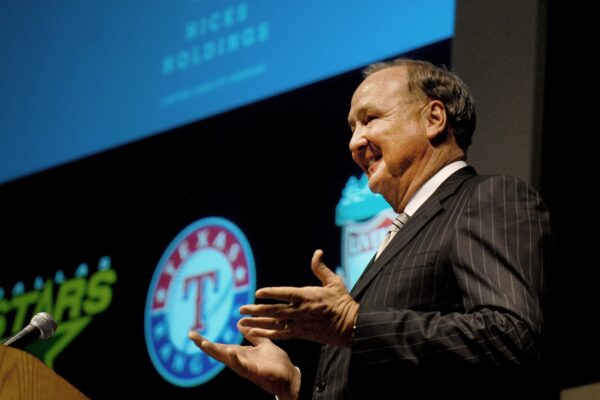To Manage Teams, a Bit of Negative Accentuates the Positive
Strategic timing of praise and criticism can boost members’ performance
Based on the research of Constantinos Coutifaris and Paul Green

When interacting with employees, leaders in the business world are often taught to take the Ted Lasso approach. The fictional soccer coach of the eponymous Apple TV+ show stays positive, no matter the circumstance.
It isn’t just to be warm and fuzzy. Decades of research have shown that a sanguine approach to leadership boosts team members’ individual performance, a finding that has inspired many companies to offer emotional intelligence training to managers.
But new research from Texas shows that being a little negative can actually boost achievement. It just depends on when leaders express it, and the tenor of their earlier interactions.
“When — and which — emotions are expressed by leaders matters for unlocking the potential of team members,” says Constantinos Coutifaris, an assistant professor of management.
Coutifaris and co-author Paul Green, also an assistant professor of management, agree that positive emotional expressions can improve employee functioning. But they say past research on so-called leadership affect has largely neglected the issue of timing.
With Jacob Levitt and the late Sigal Barsade of The Wharton School of the University of Pennsylvania, Coutifaris and Green conducted two studies. Both studies analyzed leaders’ timing in expressing positive and negative emotions to subordinates and how it affected subsequent performance.
Their studies looked at two kinds of teams: student-athletes and coaches at the NCAA Division I sports program of a top university, and employees and managers at a major consulting firm. Both studies divided the study periods — a sports season and a calendar year — into three phases: beginning, middle, and end.
The researchers found that positive emotions from coaches or consulting team leaders during the beginning phase improved team members’ individual performance. But performance improved even further when leaders occasionally leaned into negative expressions during the middle phase.
In one study, the researchers surveyed 245 varsity athletes about emotions expressed by 86 coaches over the course of the season. They used ascending scales from 1 to 5 to rate the frequency of positive and negative emotional expressions by leaders. Their coaches then rated each player’s athletic performance.
The analysis found that:
- A 1-point increase in coaches’ early positive emotional expressions increased individual student-athlete performance by 3.3%.
- When coaches expressed “more frequent than average” negative emotions midway through the season, the same 1-point increase in early positivity boosted performance by 4.4%.
Although the difference is seemingly slight, negativity at the midpoint boosted the impact of early positive expressions on performance by 33.3%, the researchers note.
For the other study, the researchers analyzed written performance evaluations using computational linguistics software. The software calculated the percentages of positive and negative words shared with 9,968 employees at various points throughout the year. At the end of the year, managers rated the overall job performance of each employee.
Similarly to the other study, the analysis found that occasional leader negativity at the midpoint improved the benefits of early positive expressions by 40.8%.
The researchers emphasize that kudos outweighed criticism. The median percentage of positive words in early reviews was 5.5%, while the median percentage of negative words in the middle phase was 0.5%.
In short, a little negativity enhances the benefits of positivity, says Green: “The big surprise for me was that negative emotions are pretty valuable. They help people improve.”
Why did small doses of negativity in the middle phase make such a notable difference? It has to do with the psychology behind first impressions, the researchers explain.
According to imprinting theory, early emotional experiences have long-lasting effects on an individual’s later attitudes and behaviors. Research has also found that subordinates take leaders’ expressions as strong indicators of their social worth, or how much they are valued and respected. That, in turn, affects their performance.
Thus, if a leader starts out positive, team members are less likely to view later negativity as disrespect, which would create resentment. Rather, they view criticism as an opportunity to regain their leader’s respect and shore up their status on the team.
“Leaders have to be very mindful,” says Coutifaris. “If they want to make sure that their team members perform at their best and feel respected and worthy, they should prioritize being positive early on, when the team is being formulated. Then, they can use negative emotions more frequently than average at the midpoint.
“Expressing those positive emotions early allows you, the leader, to use some different emotions at the midpoint to sort of jolt people to perform better and better over time.”
“Timing Is Everything: An Imprinting Framework for the Implications of Leader Emotional Expressions for Team Member Social Worth and Performance” is published in Organization Science.
Story by Kiah Collier
About this Post
Share:


